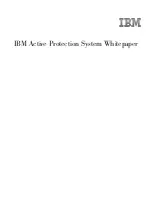
Preparing for Universal Volume Manager Operations
3-11
Hitachi Universal Storage Platform V/VM Universal Volume Manager User’s Guide
VMA of Data Retention Utility
•
If you map an external volume to which the volume management area
(VMA) of Data Retention Utility is set, you need to configure system
options before performing the port discovery or volume discovery operation
to validate the VMA information. Please call the Hitachi Data Systems
Support Center to find out about how to configure system options (see
Calling the Hitachi Data Systems Support Center).
•
If you have previously mapped a TagmaStore USP volume and set the VMA
of Data Retention Utility in that volume, the VMA setting is inherited when
you map the volume again.
Maintenance Guidelines for an External Storage System
•
Before you change settings of the external storage system, you must
delete the external volume mapping. After you change settings of the
external storage system, you must remap the external volume. If you do
not remap the volume, the external volume cannot be used in the local
storage system.
The examples of external storage system settings which require the re-
mapping of external volume are as follows:
–
Changing WWNs of target ports which connect to the local storage
system
–
Changing the serial number of the external storage system
–
Changing LUNs of volumes of the external storage system
–
Reducing the volume capacity of the external storage system so that
the volume capacity is smaller than when volume mapping was
performed
Besides, re-mapping is required for Universal Volume Manager after you
change external storage system settings that require modification on the
host side when hosts are connected directly to a external storage system.
Before you delete the external volume mapping, make sure that the
volume has no LU paths, and that the volume is not a component of any
pairs (such as TrueCopy pairs).
Performance and Status Guidelines
•
The performance and status of the external storage system affect the Read
and Write performance of the mapped external volume. If there is a heavy
load on the external storage system, the processing speed of the Read and
Write operation becomes slow. In this case, the I/Os from the mainframe
host may become MIH error.
•
If the host connected to the local storage system issues too many I/Os to
be processed by the external storage system, the commands from the host
may possibly be timed out.
















































